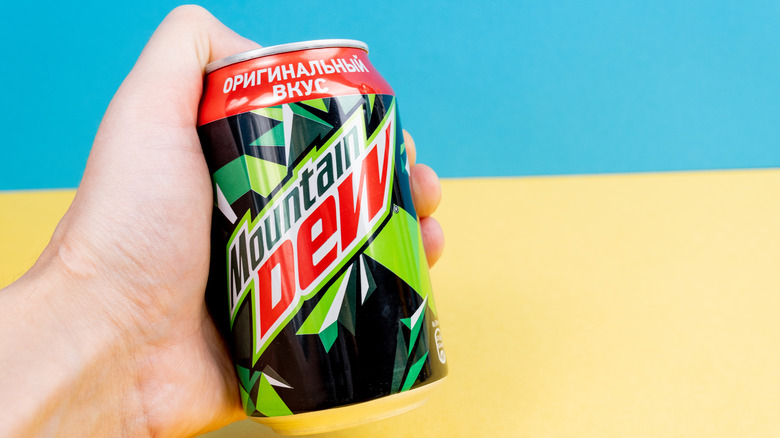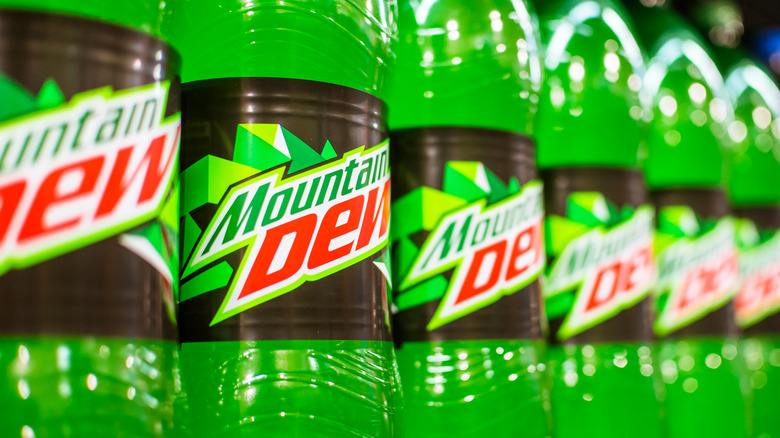This Is How Mountain Dew Gets Its Color
The sheer unnaturalness of Mountain Dew's colors prompt skepticism at best and rumors of testicular shrinkage and sterility at its most famously worst. Fortunately for many, the latter has been disproven time and time again. Snopes and Live Science both belabor the point that Yellow No. 5, the dye that appears in the original Mountain Dew (and is also known as tartrazine) will not, in Snopes's words, "[have] nasty effects on one's manhood."
The problem with the general fixation on genitalia affected by coloring additives is that the silliness of the rumors could overshadow the serious issues involved. Live Science notes that any product sold with Yellow No. 5 in the E.U. must label the ingredient in a special warning label as well as the regular ingredient list. (In the United States, companies are not required to comply.) The reasoning is that, as the U.K.'s National Health Service explains, tartrazine is linked to hyperactivity in children. However, the strength of the connection vs. the general fear it inspires remains murky.
Similarly, the worries over Mountain Dew's coloring may distract from the reason it does not appear in the E.U. — namely, according to Soda Pop Craft, that it contains brominated vegetable oil (BVO), an additive that helps bind Mountain Dew's oil-based flavors to water and has the potential to cause irritation to one's skin and mucous membranes. Neither of those worries have to do with naughty bits, though, so one brings them up for naught.
What color is Mountain Dew?
The focus on additives is due to how Mountain Dew's coloring is largely a vacuum to be decided by marketing. When asked by BuzzFeed News, Greg Lyons, VP of marketing at Mountain Dew, stated that he calls it "Mountain Dew color" because they don't really call the drinks a color. This explains the mystifying names like Voltage or Live Wire; they don't give away that the former is blue and the latter is orange, yet when you learn the colors, the name seems to make sense somehow.
However, the BuzzFeed piece being a BuzzFeed piece snarkily says, "The official BuzzFeed style guide does not recognize 'Mountain Dew' as a legitimate color, so we're going to stick with chartreuse." What is more interesting than trying to describe the color of Mountain Dew is Lyons' refusal to do so. "[Neon] if you're forcing me to describe it," he shared. "'Mountain Dew color' is in my words." To that end, Mountain Dew color exists as a produced effect, not a natural phenomenon worthy of a place on a palate. Any Mountain Dew is a Mountain Dew color by virtue of how utterly divorced from the drink's substance it is. It's a random signifier decided after the fact.
In short, the color doesn't really matter. It distracts from potentially serious issues with rumors about infertility and disguises the flavor of its concentrated orange juice, a major ingredient which one can see in Mel Magazine's examination of Mountain dew's ingredients.

